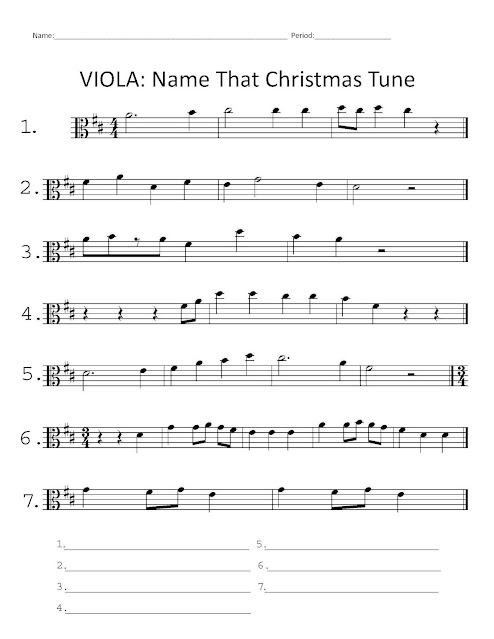I've been posting a lot about working on note reading fluency in my beginning strings class. I'm happy to say that all of my efforts are paying off and students are getting better and faster at reading notes. They were able to sight read some sheet music I passed out and I was super excited (and relieved) that we are progressing! I've been reinforcing note reading skills with all kinds of worksheets, activities, games, and online exercises.
A couple weeks ago, I used a 'Name That Christmas Tune' worksheet to help motivate students to de-code notes. Students who were able to figure out the most tunes got a small prize. Students worked so hard note reading and practicing to get all of the right notes. After students tried to figure out the tunes on their own, we played each line as a class. Students really enjoyed recognizing the tunes. Once students realized they could pluck away on familiar tunes, I noticed many students were seeking out more new music they could play and I think it spurred some practice motivation (a huge bonus!). Some students excitedly showed me more tunes they were able to figure out. Playing familiar fun tunes is an important part of learning an instrument. Students light up when they can play even a little bit of a favorite tune.
Access my FREE Name that Tune worksheet here!
We have our 2nd concert of the school year coming up in a couple weeks. It's tricky filling up an entire concert with just beginning orchestra. We're working super hard...but we can't perform more than 5-10 minutes worth of music. I'm going to add a little time to our concert by have students demonstrate some skills while having some parents come try some of our skills as well. For example, have a parent volunteer try some of our bow exercises or try to bow on only one string at a time. Another way to add a little time is to use the 'Name That Tune' worksheet to play that game at our concert! It's an easy and quick extra piece. I'll ask the audience to raise their hands to guess what each song is...and I'll have fun prizes.












